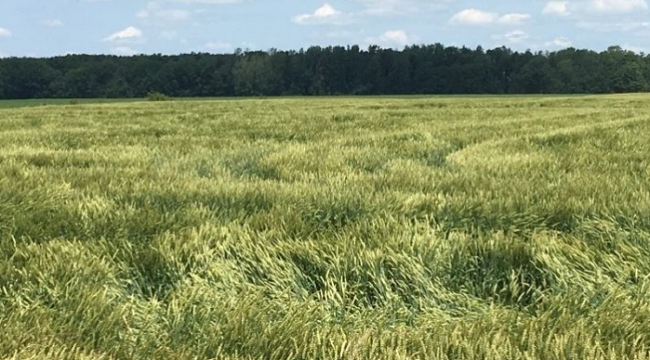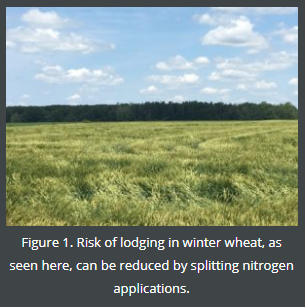
This past fall brought challenges for many growers. Prolonged wet weather delayed soybean harvest and pushed winter wheat seeding into late October and early November for some. Before the snow fell, many fields had not yet emerged. While the seed did germinate and vernalize, the late planting meant no tiller development. As a result, nitrogen management will be important in order to maximize the yield potential of those late planted fields.
If you are dealing with a field that was planted late and did not tiller before going into winter, split nitrogen applications should be considered to stimulate tillering while minimizing nitrogen losses. The first application of nitrogen can be made in mid to late March, if the weather permits. The second application of nitrogen should then be made when the wheat reaches first to second node (GS 31-32) which is usually the first or second week of May. If you wish to apply all your nitrogen in one application, then that application should be made in late April to avoid significant nitrogen losses that may occur from wet soils earlier in the growing season.

The amount of nitrogen that should be applied to your wheat crop can vary depending on crop rotation, history of manure applications, soil type, variety being grown, etc. However, when looking at general recommendations for winter wheat in Ontario, rates can be pushed to 120-150 lbs/ac total for soft red winter wheat when using a fungicide application. If you are not planning to use a fungicide, rates should not be pushed beyond 90-100 lbs/ac in order to manage disease and lodging risk (Figure 1).
When using split nitrogen applications 50-60% of your total nitrogen should be applied in the first application (mid to late March) with the remainder being applied in the second application (first to second node). This amount stimulates tiller development while avoiding significant nitrogen losses. Additionally, it is beneficial to use a nitrogen source, such as UAN, that provides some ammonium or nitrate in that first application so that when the wheat crop breaks dormancy, nitrogen is immediately available for the plants to take up.
Although early season nitrogen applications can be effective in boosting yields in later planted winter wheat, they are often applied at a time when more frequent rainfall occurs and soils are saturated. Therefore, the risk of nitrogen loss should also be considered when making these applications. Urease inhibitors can be utilized to effectively minimize nitrogen losses.
It can be difficult to determine early on whether or not a winter wheat stand should be kept. Therefore, it is important to get out and walk your fields early in the spring to assess stands for winter survival and tiller growth. After a week or two of consistent warm weather, fields should begin to green up and stand assessments can more easily be made. More information on assessing winter wheat stands for survival can be found at www.FieldCropNews.com. While you may want to delay your nitrogen applications until you are sure you are going to keep your field of wheat, delayed tiller development will have an impact on yield. Consider that a portion of the nitrogen that is applied to your wheat crop will be available to your corn crop if you chose to switch. The amount that will be available will vary; however, it is important to remember that not all is lost and to take this into consideration when making management decisions.
Source : fieldcropnews